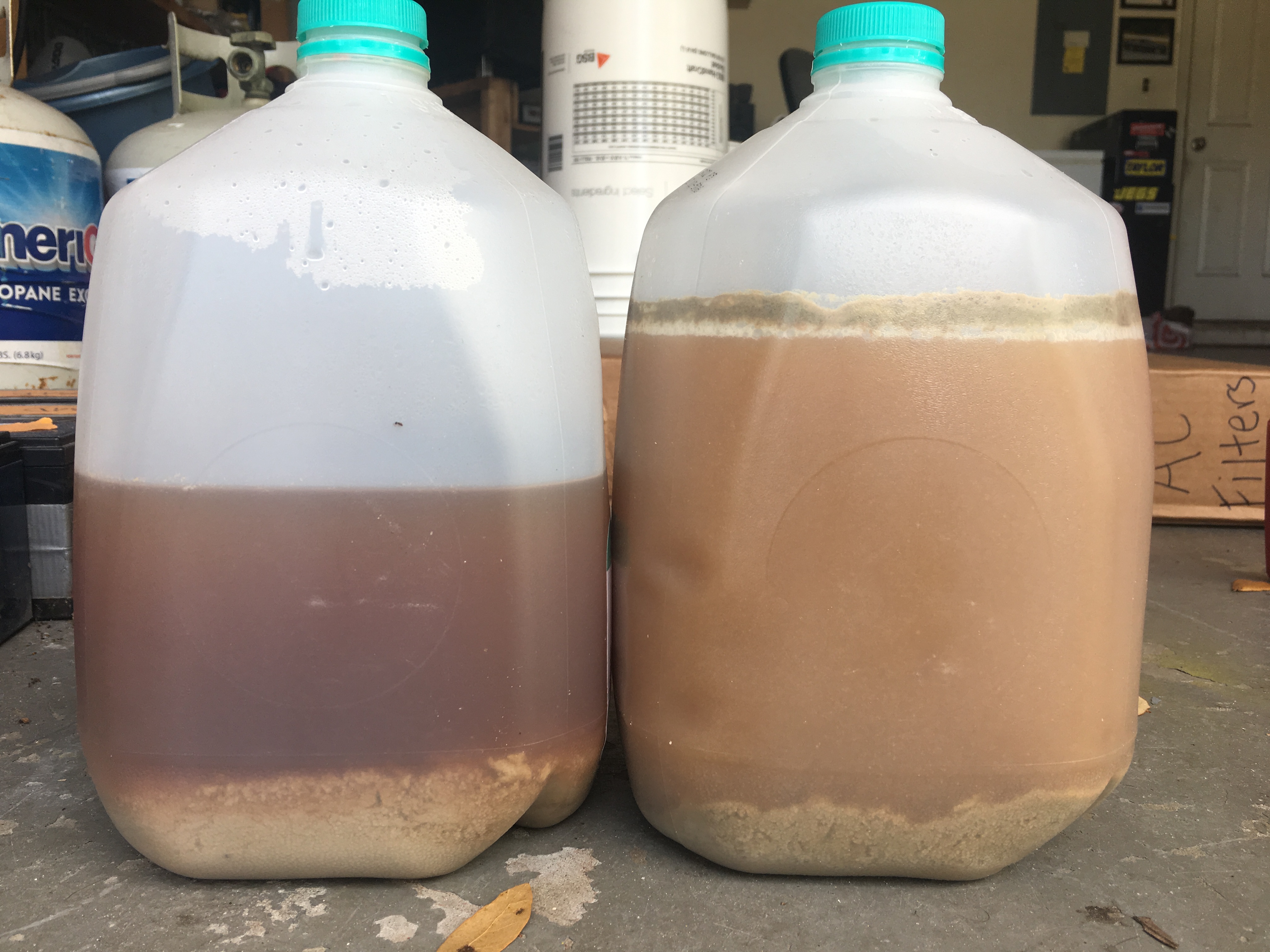FunkedOut
FunkedOver
- Joined
- Mar 23, 2017
- Messages
- 852
- Reaction score
- 419
Exactly one week ago, I had a brew day where I made two batches.
Each one, left ~1/2 gallon of wort in the kettle with all the break material.
I drained each into an empty water jug and sealed it up tight to discard later.
Next day, I walk out into the garage and see they’ve settled a decent amount, and I get the idea to loosen the tops to see if they’d catch anything wild that would ferment.
Garage spent that whole day wide open with the jugs on the floor at the edge of the garage.
Yeasterday, I walked out to the garage a saw a very active fermentation going on in one of the two jugs! The wort is no longer clear, and I can see bubbles rushing up the side of the jug. Smells like, beer.
I poured a bit of it into the other jug.
This is Florida, ~70*F out and lots of oak trees, pine trees and palms around.
Washing my car is useless these days, as the very next day, the car is covered in a green haze; oak pollen.
I had planned on letting finish in place, then cold crashing and bottling.
If it tastes good, I plan on keeping a culture on hand.
This is new territory for me.
Anything I should know?
Any advice?
Thanks in advance.
Each one, left ~1/2 gallon of wort in the kettle with all the break material.
I drained each into an empty water jug and sealed it up tight to discard later.
Next day, I walk out into the garage and see they’ve settled a decent amount, and I get the idea to loosen the tops to see if they’d catch anything wild that would ferment.
Garage spent that whole day wide open with the jugs on the floor at the edge of the garage.
Yeasterday, I walked out to the garage a saw a very active fermentation going on in one of the two jugs! The wort is no longer clear, and I can see bubbles rushing up the side of the jug. Smells like, beer.
I poured a bit of it into the other jug.
This is Florida, ~70*F out and lots of oak trees, pine trees and palms around.
Washing my car is useless these days, as the very next day, the car is covered in a green haze; oak pollen.
I had planned on letting finish in place, then cold crashing and bottling.
If it tastes good, I plan on keeping a culture on hand.
This is new territory for me.
Anything I should know?
Any advice?
Thanks in advance.































![Craft A Brew - Safale S-04 Dry Yeast - Fermentis - English Ale Dry Yeast - For English and American Ales and Hard Apple Ciders - Ingredients for Home Brewing - Beer Making Supplies - [1 Pack]](https://m.media-amazon.com/images/I/41fVGNh6JfL._SL500_.jpg)





























